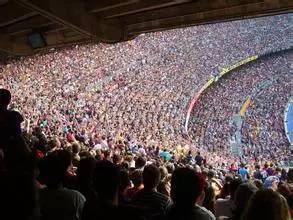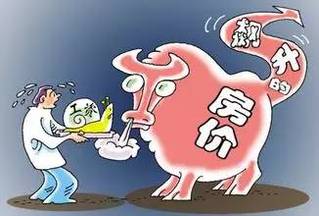Edited, memorised or added to reading queue
on 31-Aug-2018 (Fri)
Do you want BuboFlash to help you learning these things? Click here to log in or create user.
Flashcard 3229953953036
| status | not learned | measured difficulty | 37% [default] | last interval [days] | |||
|---|---|---|---|---|---|---|---|
| repetition number in this series | 0 | memorised on | scheduled repetition | ||||
| scheduled repetition interval | last repetition or drill |
JavaScript Introduction
ficate JS References JavaScript Objects HTML DOM Objects JavaScript Introduction ❮ Previous Next ❯ This page contains some examples of what JavaScript can do. JavaScript Can Change HTML Content <span>One of many JavaScript HTML methods is getElementById(). This example uses the method to "find" an HTML element (with id="demo") and changes the element content (innerHTML) to "Hello JavaScript": Example document.getElementById("demo").innerH
ficate JS References JavaScript Objects HTML DOM Objects JavaScript Introduction ❮ Previous Next ❯ This page contains some examples of what JavaScript can do. JavaScript Can Change HTML Content <span>One of many JavaScript HTML methods is getElementById(). This example uses the method to "find" an HTML element (with id="demo") and changes the element content (innerHTML) to "Hello JavaScript": Example document.getElementById("demo").innerH
| status | not read | reprioritisations | ||
|---|---|---|---|---|
| last reprioritisation on | suggested re-reading day | |||
| started reading on | finished reading on |
Flashcard 3263971593484
| status | not learned | measured difficulty | 37% [default] | last interval [days] | |||
|---|---|---|---|---|---|---|---|
| repetition number in this series | 0 | memorised on | scheduled repetition | ||||
| scheduled repetition interval | last repetition or drill |
JavaScript Introduction
ficate JS References JavaScript Objects HTML DOM Objects JavaScript Introduction ❮ Previous Next ❯ This page contains some examples of what JavaScript can do. JavaScript Can Change HTML Content <span>One of many JavaScript HTML methods is getElementById(). This example uses the method to "find" an HTML element (with id="demo") and changes the element content (innerHTML) to "Hello JavaScript": Example document.getElementById("demo").innerH
ficate JS References JavaScript Objects HTML DOM Objects JavaScript Introduction ❮ Previous Next ❯ This page contains some examples of what JavaScript can do. JavaScript Can Change HTML Content <span>One of many JavaScript HTML methods is getElementById(). This example uses the method to "find" an HTML element (with id="demo") and changes the element content (innerHTML) to "Hello JavaScript": Example document.getElementById("demo").innerH
Flashcard 3266420804876
| status | not learned | measured difficulty | 37% [default] | last interval [days] | |||
|---|---|---|---|---|---|---|---|
| repetition number in this series | 0 | memorised on | scheduled repetition | ||||
| scheduled repetition interval | last repetition or drill |
JavaScript Introduction
es of what JavaScript can do. JavaScript Can Change HTML Content One of many JavaScript HTML methods is getElementById(). This example uses the method to "find" an HTML element (with id="demo") <span>and changes the element content (innerHTML) to "Hello JavaScript": Example document.getElementById("demo").innerHTML = "Hello JavaScript"; Try it Yourself » JavaScript accepts both double and single quotes: Example document.getEl
es of what JavaScript can do. JavaScript Can Change HTML Content One of many JavaScript HTML methods is getElementById(). This example uses the method to "find" an HTML element (with id="demo") <span>and changes the element content (innerHTML) to "Hello JavaScript": Example document.getElementById("demo").innerHTML = "Hello JavaScript"; Try it Yourself » JavaScript accepts both double and single quotes: Example document.getEl
| status | not read | reprioritisations | ||
|---|---|---|---|---|
| last reprioritisation on | suggested re-reading day | |||
| started reading on | finished reading on |
| status | not read | reprioritisations | ||
|---|---|---|---|---|
| last reprioritisation on | suggested re-reading day | |||
| started reading on | finished reading on |
| status | not read | reprioritisations | ||
|---|---|---|---|---|
| last reprioritisation on | suggested re-reading day | |||
| started reading on | finished reading on |
Flashcard 3266903936268
| status | not learned | measured difficulty | 37% [default] | last interval [days] | |||
|---|---|---|---|---|---|---|---|
| repetition number in this series | 0 | memorised on | scheduled repetition | ||||
| scheduled repetition interval | last repetition or drill |
JavaScript Where To
DOM JS HTML Input JS HTML Objects JS HTML Events JS Browser JS Quiz JS Certificate JS References JavaScript Objects HTML DOM Objects JavaScript Where To ❮ Previous Next ❯ The <script> Tag <span>In HTML, JavaScript code must be inserted between <script> and </script> tags. Example <script> document.getElementById("demo").innerHTML = "My First JavaScript"; </script> Try it Yourself » Old JavaScript examples may use a type attribute: <script
DOM JS HTML Input JS HTML Objects JS HTML Events JS Browser JS Quiz JS Certificate JS References JavaScript Objects HTML DOM Objects JavaScript Where To ❮ Previous Next ❯ The <script> Tag <span>In HTML, JavaScript code must be inserted between <script> and </script> tags. Example <script> document.getElementById("demo").innerHTML = "My First JavaScript"; </script> Try it Yourself » Old JavaScript examples may use a type attribute: <script
| status | not read | reprioritisations | ||
|---|---|---|---|---|
| last reprioritisation on | suggested re-reading day | |||
| started reading on | finished reading on |
| status | not read | reprioritisations | ||
|---|---|---|---|---|
| last reprioritisation on | suggested re-reading day | |||
| started reading on | finished reading on |
| status | not read | reprioritisations | ||
|---|---|---|---|---|
| last reprioritisation on | suggested re-reading day | |||
| started reading on | finished reading on |
| status | not read | reprioritisations | ||
|---|---|---|---|---|
| last reprioritisation on | suggested re-reading day | |||
| started reading on | finished reading on |
| status | not read | reprioritisations | ||
|---|---|---|---|---|
| last reprioritisation on | suggested re-reading day | |||
| started reading on | finished reading on |
| status | not read | reprioritisations | ||
|---|---|---|---|---|
| last reprioritisation on | suggested re-reading day | |||
| started reading on | finished reading on |
| status | not read | reprioritisations | ||
|---|---|---|---|---|
| last reprioritisation on | suggested re-reading day | |||
| started reading on | finished reading on |
How do you read an opening book? : chess
year ago I don't spend a lot of time on opening prep, so if you are planning on devoting a lot of effort to this (which I don't recommend, but to each his own), definitely ignore this comment. <span>When I read an opening book, I first play through the main line, reading what the author has to say about the moves and skipping all the variations. If I like the resulting positions, then I might spend a little more effort learning the opening. Otherwise, I stop reading. Since you've already bought the book, presumably you like the positions. But for other openings, looking at a database before buying a book can be invaluable. Once I've decided to pursue an opening, I look at the games the author has included to try to understand more of the main ideas that pop up in all stages of the game (including the endg
| status | not read | reprioritisations | ||
|---|---|---|---|---|
| last reprioritisation on | suggested re-reading day | |||
| started reading on | finished reading on |
How do you read an opening book? : chess
pening. Otherwise, I stop reading. Since you've already bought the book, presumably you like the positions. But for other openings, looking at a database before buying a book can be invaluable. <span>Once I've decided to pursue an opening, I look at the games the author has included to try to understand more of the main ideas that pop up in all stages of the game (including the endgame if most of the games reach similar positions). Once I understand (at least some of) the ideas of the opening, then I go back and reread the main lines, this time looking at the short variations as well. These are typically tactical
| status | not read | reprioritisations | ||
|---|---|---|---|---|
| last reprioritisation on | suggested re-reading day | |||
| started reading on | finished reading on |
How do you read an opening book? : chess
look at the games the author has included to try to understand more of the main ideas that pop up in all stages of the game (including the endgame if most of the games reach similar positions). <span>Once I understand (at least some of) the ideas of the opening, then I go back and reread the main lines, this time looking at the short variations as well. These are typically tactical shots that one must be aware to avoid (or exploit), several of which may persist into the middlegame. Once I'm comfortable with the main lines, I create a PGN file with them (and eventually some key variations). There are far too many lines in an opening book to memorize them all, so w
| status | not read | reprioritisations | ||
|---|---|---|---|---|
| last reprioritisation on | suggested re-reading day | |||
| started reading on | finished reading on |
How do you read an opening book? : chess
main lines, this time looking at the short variations as well. These are typically tactical shots that one must be aware to avoid (or exploit), several of which may persist into the middlegame. <span>Once I'm comfortable with the main lines, I create a PGN file with them (and eventually some key variations). There are far too many lines in an opening book to memorize them all, so when I go through a third time, this time looking at all the variations as well, I evaluate the variations as worth knowing or otherwise. Those deemed worthwhile get added to the file, while those that I would never intend / allow to be played are immediately forgotten. As an example of what I mean, if you don't play the French as black, you don't need to book up on both the advance variation and the Tarrasch -- just pick one and always play that (at
| status | not read | reprioritisations | ||
|---|---|---|---|---|
| last reprioritisation on | suggested re-reading day | |||
| started reading on | finished reading on |
How do you read an opening book? : chess
ll, I evaluate the variations as worth knowing or otherwise. Those deemed worthwhile get added to the file, while those that I would never intend / allow to be played are immediately forgotten. <span>As an example of what I mean, if you don't play the French as black, you don't need to book up on both the advance variation and the Tarrasch -- just pick one and always play that (at least until you have time / decide it is worthwhile to learn more). The one caveat is that you should probably make an effort to be aware of transpositions between lines that could take you from a variation that you are well prepared for into one that you know nothing about. When all is said and done, excluding traps, I like my PGN file to have no more than 10-20 variations. Annotations are also generally good, as you might forget some of the ideas, and it
| status | not read | reprioritisations | ||
|---|---|---|---|---|
| last reprioritisation on | suggested re-reading day | |||
| started reading on | finished reading on |
How do you read an opening book? : chess
is that you should probably make an effort to be aware of transpositions between lines that could take you from a variation that you are well prepared for into one that you know nothing about. <span>When all is said and done, excluding traps, I like my PGN file to have no more than 10-20 variations. Annotations are also generally good, as you might forget some of the ideas, and it would be bad to memorize a line and forget whether it is good or a trap to avoid. I also go back through the games in the book and include the relevant ones in my PGN for reference. Only now does it make sense to start trying to memorize. I like to do this with by practicing with physical pieces, but there is now software to help as well. The nice thing about this
| status | not read | reprioritisations | ||
|---|---|---|---|---|
| last reprioritisation on | suggested re-reading day | |||
| started reading on | finished reading on |
How do you read an opening book? : chess
eas, and it would be bad to memorize a line and forget whether it is good or a trap to avoid. I also go back through the games in the book and include the relevant ones in my PGN for reference. <span>Only now does it make sense to start trying to memorize. I like to do this with by practicing with physical pieces, but there is now software to help as well. The nice thing about this approach is that when I decide to switch to a different variation (e.g., because I'm not getting great results or my tastes change), I already have a lot of th
| status | not read | reprioritisations | ||
|---|---|---|---|---|
| last reprioritisation on | suggested re-reading day | |||
| started reading on | finished reading on |
How do you read an opening book? : chess
vant ones in my PGN for reference. Only now does it make sense to start trying to memorize. I like to do this with by practicing with physical pieces, but there is now software to help as well. <span>The nice thing about this approach is that when I decide to switch to a different variation (e.g., because I'm not getting great results or my tastes change), I already have a lot of the work done, and I can go back through the opening book to look for something better with minimal effort. share Save level 1 QuickBenDelat Patzer1 point · 1 year ago Moving forward, buy books that come with a set of chessbase files. share Save Community Details r/chess 99.8k Subscribers 872
| status | not read | reprioritisations | ||
|---|---|---|---|---|
| last reprioritisation on | suggested re-reading day | |||
| started reading on | finished reading on |
Flashcard 3268452420876
| status | not learned | measured difficulty | 37% [default] | last interval [days] | |||
|---|---|---|---|---|---|---|---|
| repetition number in this series | 0 | memorised on | scheduled repetition | ||||
| scheduled repetition interval | last repetition or drill |



